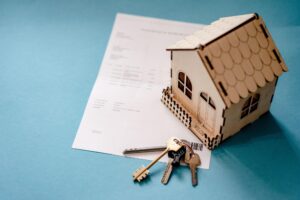Are you prepared to tackle the challenge of Memphis condo sales? Selling a condo can often feel like threading a needle in a haystack; it requires timing and the right strategies to achieve a quick sale. It doesn’t matter if you’re relocating or looking to cash in on your investment, the process of selling a condo doesn’t have to be a drawn-out affair.
The question is: what will set your property apart from the rest? With the Memphis real estate market buzzing, understanding how to effectively position your condo for a lucrative sale is essential. Follow these expert condo selling tips to help you stand out and seal the deal fast!
Real Estate Tips for Memphis: Understanding Your Market
Selling a condo begins with a deep dive into the local real estate landscape. Memphis has neighborhoods that cater to every lifestyle-from the historic vibes of downtown to the modern appeal of Harbor Town. Analyzing trends in these areas can offer valuable insight into buyer preferences. Here are some market considerations:
Current Demand
Understanding your neighborhood’s appeal is essential for selling a condo quickly, and at the right price. Memphis neighborhoods attract distinct buyer demographics. For instance, young professionals might be drawn to the urban energy of areas near the South Main Arts District, while retirees could prefer quieter, low-maintenance condos in Harbor Town. Families with school-age children may seek properties near top-rated schools, even in condo communities.
By identifying your target audience, you can tailor your marketing strategy to their specific preferences. Addressing these nuances can significantly improve your condo’s appeal and help it stand out in the competitive Memphis condo sales market.
Pricing Trends
Overpricing is often the Achilles’ heel for Memphis condo sales. It leads to properties lingering on the market far longer than expected. Buyers are savvy and equipped with online tools, which allows them to compare similar properties in real time. Pricing your condo competitively begins with researching recent comparable sales within your building or surrounding area.
Also, consider trends in price per square foot and how factors such as HOA fees, amenities, or renovations influence buyer interest. A well-researched listing price demonstrates that you are realistic about your property’s value. It also prevents the need for significant price reductions later, which can erode buyer confidence.
Furthermore, understanding the buyer psyche is critical. Setting a price just under a psychological barrier (e.g., $249,900 instead of $250,000) can attract more interest. Strategic pricing also positions your condo in search filters where buyers are most likely to look, ensuring a higher chance of offers.
Seasonality
Timing is everything in the Memphis real estate market. That’s why seasonality plays a significant role in how quickly you can sell your condo.
Spring and summer months are traditionally peak buying seasons, driven by families looking to relocate before the start of a new school year. Plus, warmer weather that makes moving easier. During these months, open houses see higher attendance, and buyers are more likely to make quick decisions to secure their ideal property.
Fall and winter can present challenges, since colder weather and the holiday season often lead to a slower market. However, these times can also attract motivated buyers. These are usually individuals who are relocating for work, investors scouting year-end deals, or individuals seeking tax advantages before the calendar year closes.
Knowing the seasonal patterns specific to Memphis and aligning your listing accordingly can amplify your condo’s appeal.
Stage Your Condo to Shine
First impressions matter; especially when it comes to real estate. Staging your condo can transform it from a property to a dream home. Buyers in Memphis often seek move-in-ready spaces with charm and functionality, so showcase your condo in its best light. Here are a few staging tips:
Declutter and Depersonalize
When selling a condo, first impressions are everything, and clutter is the fastest way to turn off potential buyers. Start by removing excess furniture to make rooms appear larger and more inviting. Replace bulky couches with sleek pieces to maximize space.
Simplify shelves and countertops by keeping only a few tasteful decor items, such as a small vase or a coffee table book. Personal items, like family photos, should be packed away. Buyers need to visualize their lives unfolding in the space, and that’s difficult when they’re distracted by someone else’s memories.
Consider investing in storage, or temporarily rent a storage unit to hold excess belongings. This allows you to maintain a clutter-free home while showing off every square foot your condo has to offer. An uncluttered and depersonalized space signals to buyers that your property has been well cared for and is move-in ready.
Highlight Unique Features
Every condo has something that makes it special, and highlighting those unique features is key to capturing buyers’ attention. Perhaps your unit has breathtaking views of the Mississippi River, a private balcony overlooking the Memphis skyline, or proximity to iconic locations, like Shelby Farms. Make these features the star of your listing and showing strategy.
Let’s say your condo offers an oversized balcony, set it up with stylish outdoor furniture and potted plants. Doing so will help buyers envision themselves enjoying a sunny afternoon there. If you’re fortunate enough to have a unit with historical charm, be sure to emphasize those character-rich elements in your marketing materials. These unique qualities can create an emotional connection with buyers, increasing the likelihood of a quick sale.
Moreover, focus on amenities that enhance the lifestyle appeal of your condo. Highlight access to on-site gyms, pools, rooftop decks, or secure parking facilities. Buyers considering Memphis condo sales are often looking for convenience and quality of life, so don’t let these advantages go unnoticed!
Freshen Up
Even minor improvements can significantly elevate your condo’s appeal, making it irresistible to potential buyers. Start with a fresh coat of paint in neutral tones. Soft tones appeal to a broad range of tastes and make spaces feel brighter and more open. Neutral colors provide a versatile backdrop that allows buyers to envision their decor without being overwhelmed by bold or dated hues.
Updated fixtures can also work wonders. Swap out old light fixtures, cabinet hardware, or faucets with budget-friendly replacements. Doing so will give the condo a polished, contemporary feel. Energy-efficient LED lighting is an excellent option to brighten up spaces while appealing to eco-conscious buyers.
Don’t forget the importance of cleanliness. Sparkling clean surfaces and polished floors create an impression of a well-maintained property. Consider professional cleaning services for an added layer of shine, particularly for carpets or tile. In Memphis, these small investments can make all the difference.
Sell Property Fast in Memphis: Market Like a Pro
A successful condo sale relies on effective marketing. In today’s digital world, a lackluster listing won’t cut it. Invest in high-quality visuals and compelling copy to capture the attention of prospective buyers. Follow these marketing must-haves:
Professional Photography: Showcase your condo with bright, high-resolution images that highlight its best features.
Virtual Tours: Offer virtual walkthroughs to attract tech-savvy buyers and out-of-state prospects.
Social Media: Promote your property on online platforms to target specific demographics relevant to Memphis condo sales.
Leverage Upgrades and Repairs
A little investment can lead to significant returns. Small updates, such as modernizing your kitchen or upgrading bathroom fixtures, can make your condo more appealing to buyers. Focus on enhancements that deliver high return on investment (ROI) while aligning with the preferences of Memphis buyers.
Smart Upgrades:
- Updated lighting fixtures
- Modern flooring options
- Fresh landscaping for patios or balconies
- Energy-efficient appliances
Craft a Winning Price Strategy
The price you set for your condo can make or break your sale. Pricing too high risks leaving your property on the market too long, while pricing too low might undersell its value. Strike a balance by leaning on local data and professional advice.
Pricing Tips:
- Avoid round numbers like $200,000-opt for $199,900 to attract buyers
- Offer incentives, such as covering HOA fees for the first year
- Be prepared to adjust based on market feedback within the first two weeks
Ensure a Smooth HOA Transition
Selling a condo in Memphis usually involves navigating homeowners’ association (HOA) requirements. Make sure that all fees, assessments, and documentation are up-to-date before listing your property. Transparency with potential buyers regarding HOA rules and costs can prevent surprises during negotiations.
Make the Most of Open Houses
Open houses are an opportunity to let your condo shine. Create an environment that feels welcoming and comfortable, leaving a lasting impression on attendees.
Quick Open House Tips:
- Create a cozy atmosphere
- Provide refreshments to encourage guests to linger
- Make sure that your space smells fresh
Are You Selling a Condo? Reach Out to Us
Selling a condo doesn’t have to be a stressful, drawn-out process. So, whether you’re targeting a quick home sale in Memphis or looking to maximize your property’s value, these tips can set you on the right path. If you’re ready to skip the guesswork, contact WeBuyHouses.com.
Contact us at 901-641-1895, or visit our website to learn more about how we can help you sell property fast. Don’t wait…take the first step toward your hassle-free condo sale!







